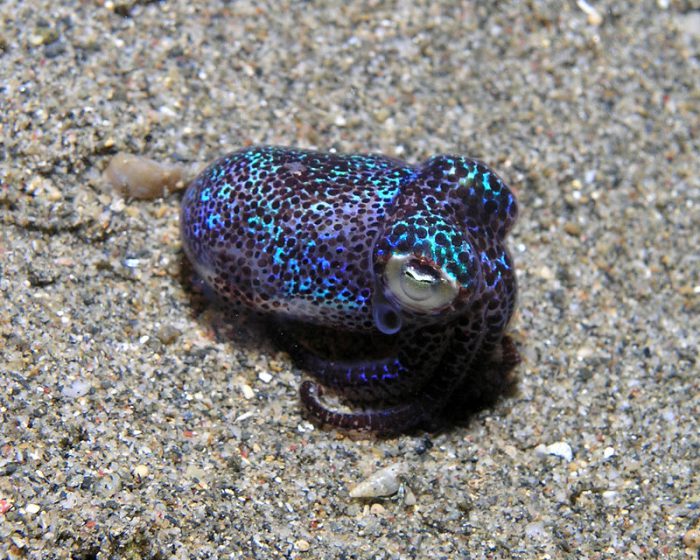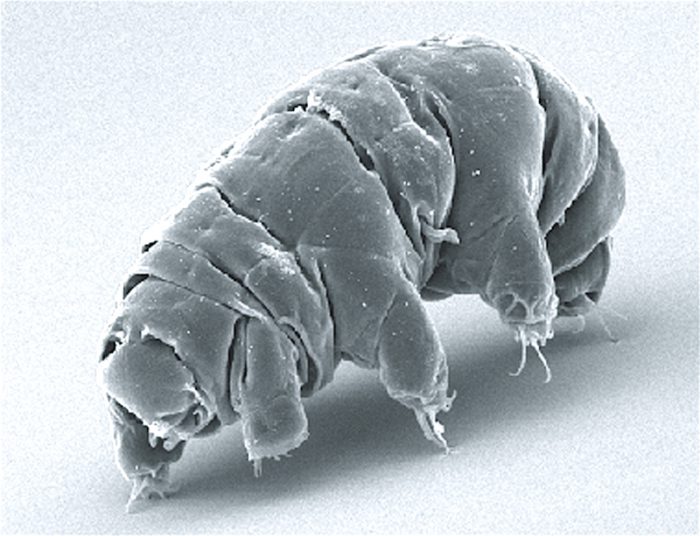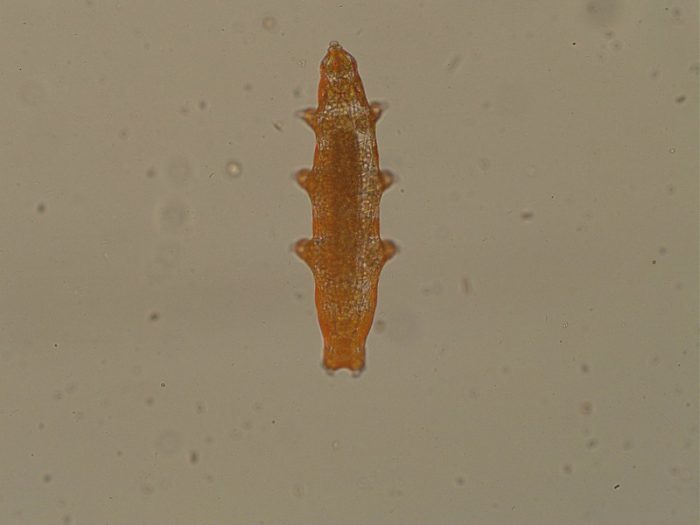The International Space Station is well known for being a home away from home for humans.
Over a hundred astronauts have spent time on the ISS, usually in crews of three that stay for several months at a time. The station has also been home to other living things, including plants, spiders, ants, and mice.
And now, you can add tardigrades and squid to the list!
On June 5, a SpaceX Dragon capsule arrived at the ISS and delivered the special package of about 5,000 tardigrades (or water bears) and 128 baby bobtail squid. Each animal will be observed by the crew to better understand how the environment in space affects living things. What do they hope to learn in each case? Let's have a look.
Light up our lives

A bobtail squid. You can't see it here, but in darkness, these animals are able to glow! (Wikimedia Commons)
The ultra tiny baby bobtail squid are only around 3mm (0.12 inches) long, but if you saw some, you'd notice them. That's because these animals can glow! They use bioluminescence—an ability where chemical reactions generate a source of low light.
The squid are not born with this ability though. Instead, they absorb a certain bacteria from the ocean around them. This bacteria then reacts with an organ inside the squid to create the glow.
On board the ISS, the squid have arrived without the bacteria inside them. The crew will add the bacteria to them on the station and watch to see if the reaction takes place as normal on Earth.
Will it take longer for the squid to get the glow? Will that tell us anything about how space changes the way that cells interact?
Water bears ... what CAN'T they do?

Buckle up, little water bear! (Wikimedia Commons)
Tardigrades meanwhile are well known for their ability to survive, well, pretty much anything. Immense pressure, being boiled, frozen, completely dehydrated ... they can even survive in the total vacuum of space. And that's what makes them so interesting to study.
One of the biggest problems posed by long distance space travel—as in to the Moon, Mars, and even beyond—is that long term exposure to conditions like microgravity and solar radiation are not things that humans are built to endure. At all.
But tardigrades are. How exactly do they do it? And are there lessons that can be learned that will help humans deal with long distance voyages in the future?
By continuing to observe both of these creatures on the ISS, scientists hope to find out! For more info on this mission, watch the video below.
 A tardigrade, magnified 40 times. 5,000 of the are now living on the ISS. (ID 157748743 © Ivanmattioli | Dreamstime.com)
A tardigrade, magnified 40 times. 5,000 of the are now living on the ISS. (ID 157748743 © Ivanmattioli | Dreamstime.com)









